Effect of Mass-Center Position of Spinal Segment on Dynamic Performances of Quadruped Bounding with a Flexible-Articulated Spine
Abstract
1. Introduction
2. Quadruped Bounding Model with a Flexible-Articulated Spine
2.1. Sagittal Simplified Model
2.2. Hybrid Dynamics of Quadruped Bounding
2.2.1. Dynamics Equation of Continuous States
2.2.2. Trigger of Events and Renewal of Discrete states
- Trigger of the touchdown-event and renewal of related discrete states
- Trigger of liftoff-event and renewal of related discrete states
2.3. Parameters Normalization in a Dimensionless Form
3. Periodically Quadruped Bounding with Different MCPSS
3.1. Generation Method of Periodically Quadruped Bounding
3.2. Determination of Preset Parameters
3.3. Periodically Quadruped Bounding with Ddifferent MCPSS
4. Results and Discussion
4.1. Motion Stability
4.2. Gait Characteristics
4.3. Spinal Oscillation
4.4. Energy Distribution
4.5. Mass-Center Vertical Fluctuation
4.6. Maximum Foot-End Force
4.7. Discussion
5. Conclusions
Author Contributions
Funding
Conflicts of Interest
References
- English, A.W. The functions of the lumbar spine during stepping in the cat. J. Morphol. 1980, 165, 55–66. [Google Scholar] [CrossRef] [PubMed]
- Alexander, R.; Dimery, N.J.; Ker, R. Elastic structures in the back and their role in galloping in some mammals. J. Zool. 1985, 207, 467–482. [Google Scholar] [CrossRef]
- Lesser, K.F. Locomotion Experiments on a Planar Quadruped Robot with Articulated Spine. Master’s Thesis, MIT, Cambridge, MA, USA, 1996. [Google Scholar]
- Zhao, Q.; Ellenberger, B.; Sumioka, H.; Sandy, T.; Pfeifer, R. The effect of spine actuation and stiffness on a pneumatically-driven quadruped robot for cheetah-like locomotion. In Proceedings of the IEEE International Conference on Robotics and Biomimetics (ROBIO), Shenzhen, China, 12–14 December 2013. [Google Scholar]
- Seok, S.; Wang, A.; Chuah, M.Y.; Hyun, D.J.; Lee, J.; Otten, D.M.; Lang, J.H.; Kim, S. Design principles for energy-efficient legged locomotion and implementation on the MIT cheetah robot. IEEE-ASME Trans. Mechatron. 2015, 20, 1117–1129. [Google Scholar] [CrossRef]
- Hyun, D.J.; Lee, J.; Park, S.; Kim, S. Implementation of trot-to-gallop transition and subsequent gallop on the MIT Cheetah I. Int. J. Robot. Res. 2016, 35, 1627–1650. [Google Scholar] [CrossRef]
- Khoramshahi, M.; Sprowitz, A.; Tuleut, A.; Ahmadabadi, M.N.; Ijspeert, A.J. Benefits of an active spine supported bounding locomotion with a small compliant quadruped robot. In Proceedings of the IEEE International Conference on Robotics and Automation (ICRA), Karlsruhe, Germany, 6–10 May 2013. [Google Scholar]
- Eckert, P.; Sprowitz, A.; Witte, H.; Ijspeert, A.J. Comparing the effect of different spine and leg designs for a small bounding quadruped robot. In Proceedings of the IEEE International Conference on Robotics and Automation (ICRA), Seattle, Washington, 26–30 May 2015. [Google Scholar]
- Wei, X.H.; Wang, C.L.; Long, Y.J.; Wang, S.G. The effect of spine on the bounding dynamic performance of legged system. Adv. Robot. 2015, 29, 973–987. [Google Scholar] [CrossRef]
- Callen, F.; Stacey, S.; Amir, P. The Effect of Spine Morphology on Rapid Acceleration in Quadruped Robots. In Proceedings of the IEEE/RSJ International Conference on Intelligent Robots and Systems (IROS), Vancouver, BC, Canada, 24–28 September 2017. [Google Scholar]
- Yesilevskiy, Y.; Yang, W.; Remy, C.D. Spine morphology and energetics: How principles from nature apply to robotics. Bioinspir. Biomim. 2018, 13, 036002. [Google Scholar] [CrossRef]
- Cao, Q.; Poulakakis, I. Quadrupedal bounding with a segmented flexible torso: Passive stability and feedback control. Bioinspir. Biomim. 2013, 8, 046007. [Google Scholar] [CrossRef] [PubMed][Green Version]
- Cao, Q.; Poulakakis, I. On the energetics of quadrupedal running: Predicting the metabolic cost of transport via a flexible-torso model. Bioinspir. Biomim. 2015, 10, 056008. [Google Scholar] [CrossRef]
- Nie, H.; Sun, R.L.; Xiong, C.H. The effect of asymmetrical body-mass distribution on the stability and dynamics of quadruped bounding with articulated spine. In Proceedings of the 8th International Conference on Intelligent Robotics and Applications (ICIRA), Portsmouth, UK, 24–27 August 2015. [Google Scholar]
- Phan, L.T.; Lee, Y.H.; Kim, D.Y.; Lee, H.; Choi, H.R. Hybrid quadruped bounding with a passive compliant spine and asymmetric segmented body. In Proceedings of the 2016 IEEE/RSJ International Conference on Intelligent Robots and Systems (IROS), Daejeon, South Korea, 9–14 October 2016. [Google Scholar]
- Pouya, S.; Khodabakhsh, M.; Spröwitz, A.; Ijspeert, A. Spinal joint compliance and actuation in a simulated bounding quadruped robot. Auton. Robot. 2017, 41, 437–452. [Google Scholar] [CrossRef]
- Zou, H.; Schmiedeler, J.P. The effect of asymmetrical body-mass distribution on the stability and dynamics of quadruped bounding. IEEE Trans. Robot. 2006, 22, 711–723. [Google Scholar]
- Remy, C.D.; Buffinton, K.; Siegwart, R. A MATLAB framework for efficient gait creation. In Proceedings of the IEEE/RSJ International Conference on Intelligent Robots and Systems (IROS), San Francisco, CA, USA, 25–30 September 2011. [Google Scholar]
- Li, Z.; Tan, Y.G.; Wu, P.; Zeng, S. The compliant effect of controlled spine on interaction with the ground in quadruped trotting. Proc. Inst. Mech. Eng. Part I J. Syst. Control Eng. 2020, 234, 27–45. [Google Scholar] [CrossRef]
- Guckenheimer, J.; Holmes, P. Nonlinear Oscillations, Dynamical Systems, and Bifurcations of Vector Fields; Springer: New York, NY, USA, 1983. [Google Scholar]
- Clerc, M.; Kennedy, J. The particle swarm-explosion, stability, and convergence in a multidimensional complex space. IEEE Trans. Evol. Comput. 2002, 6, 58–73. [Google Scholar] [CrossRef]
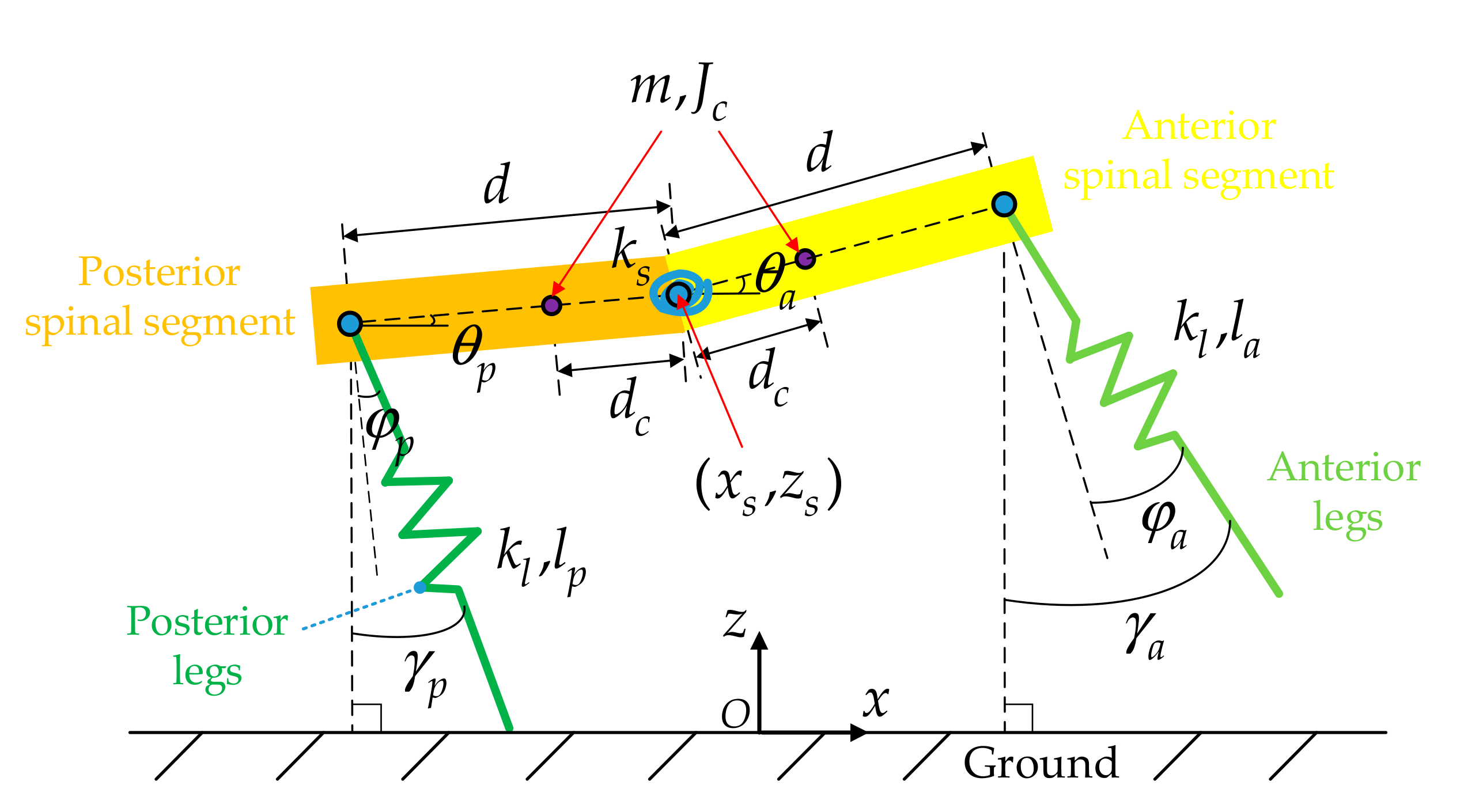

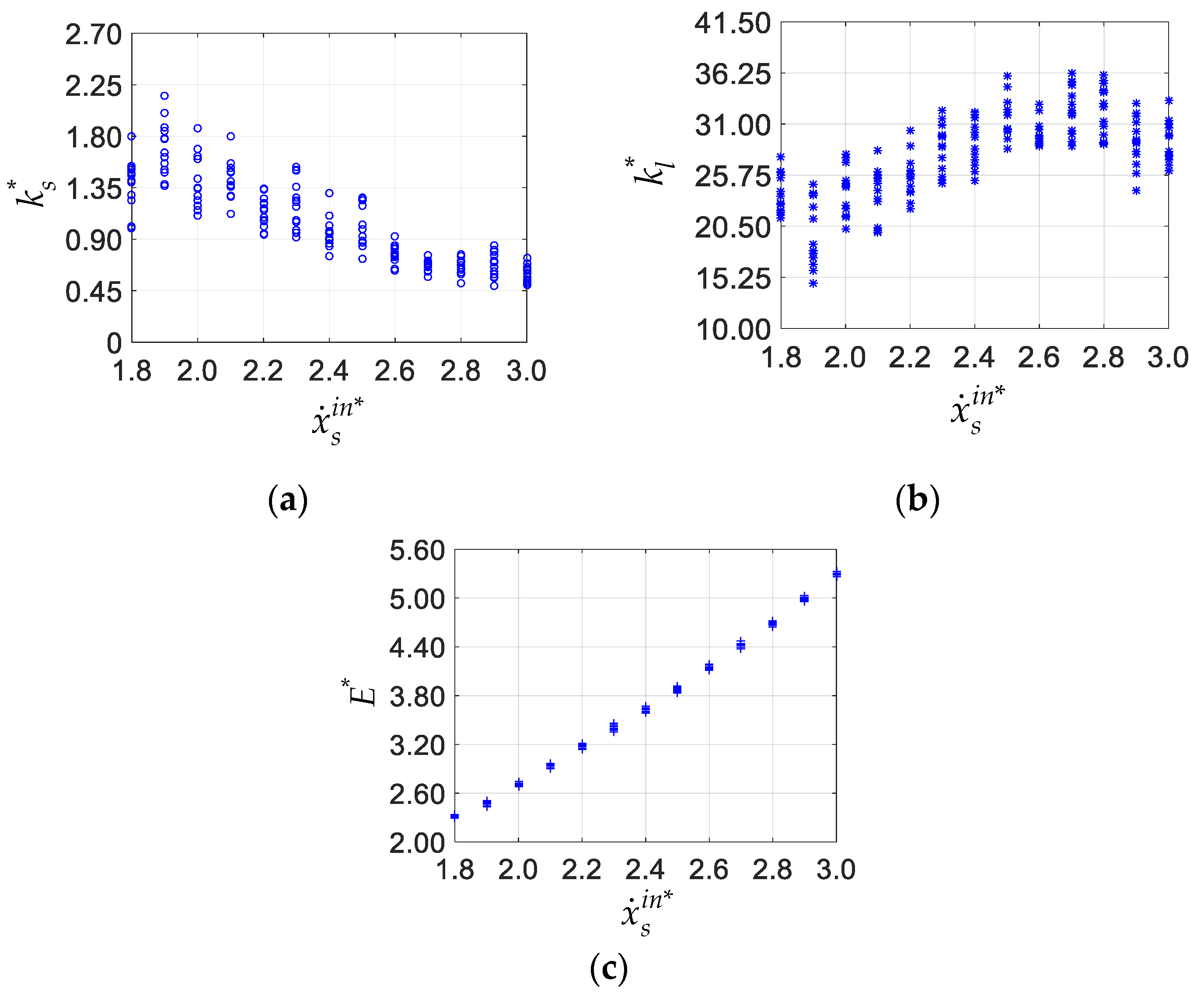

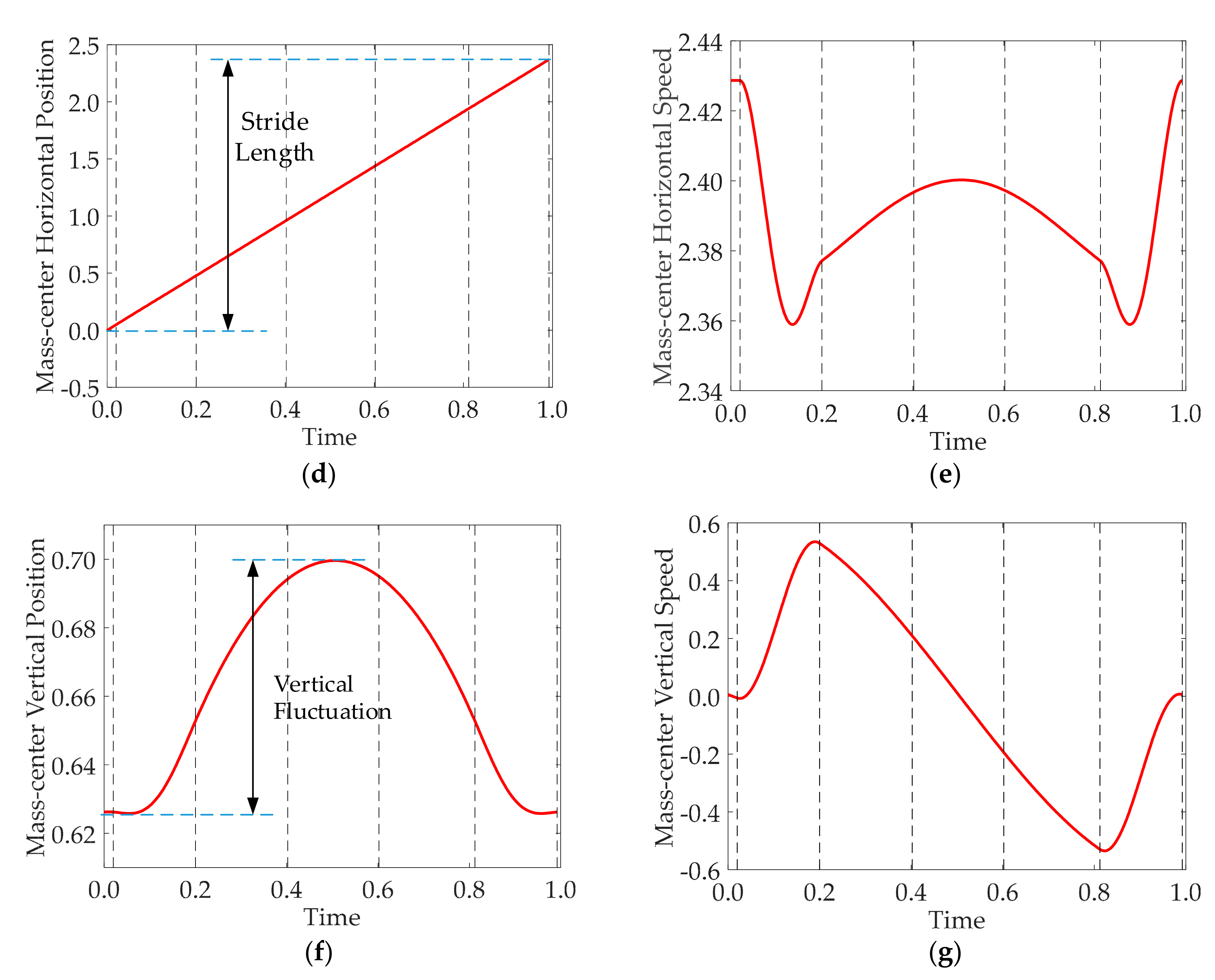

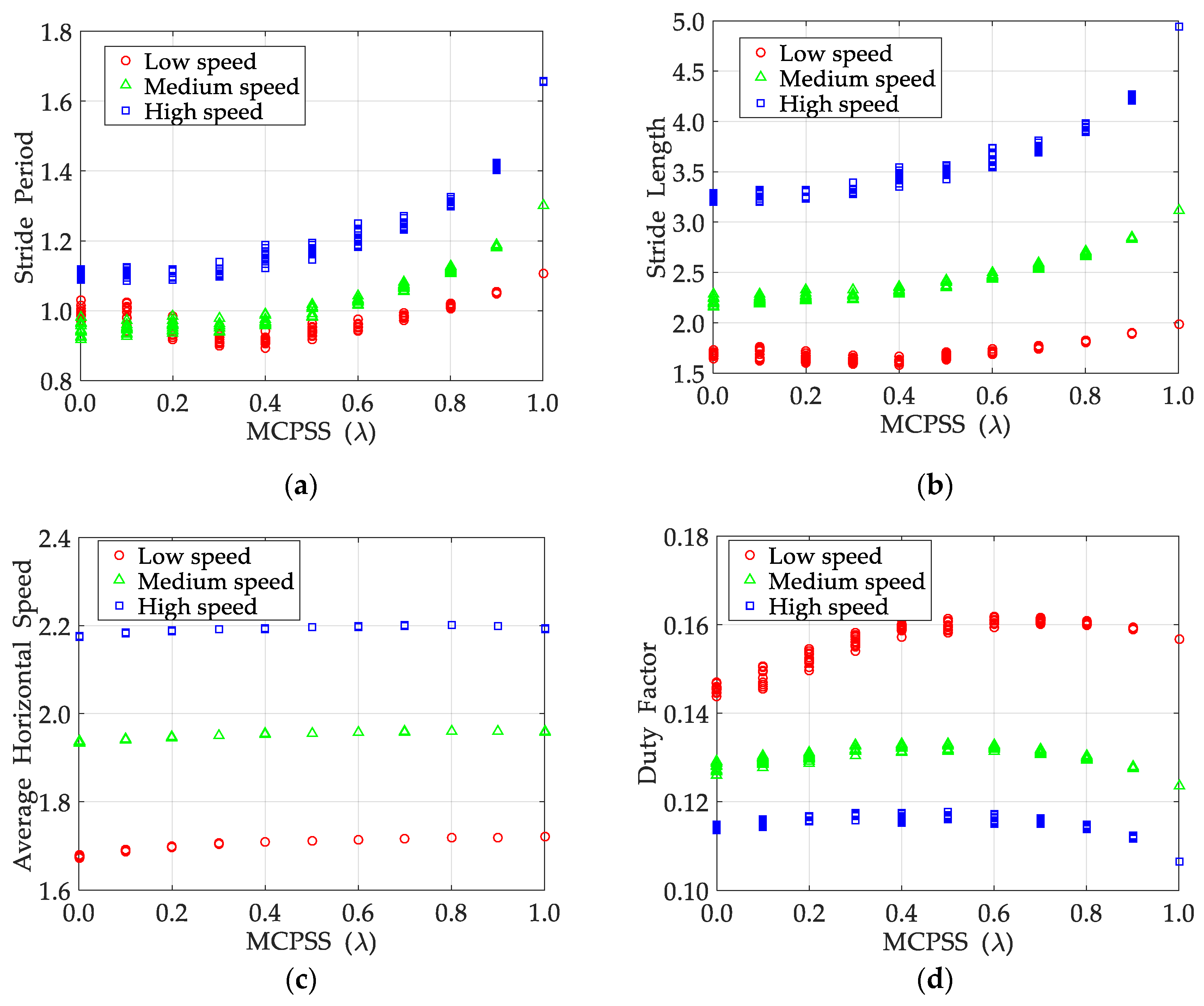
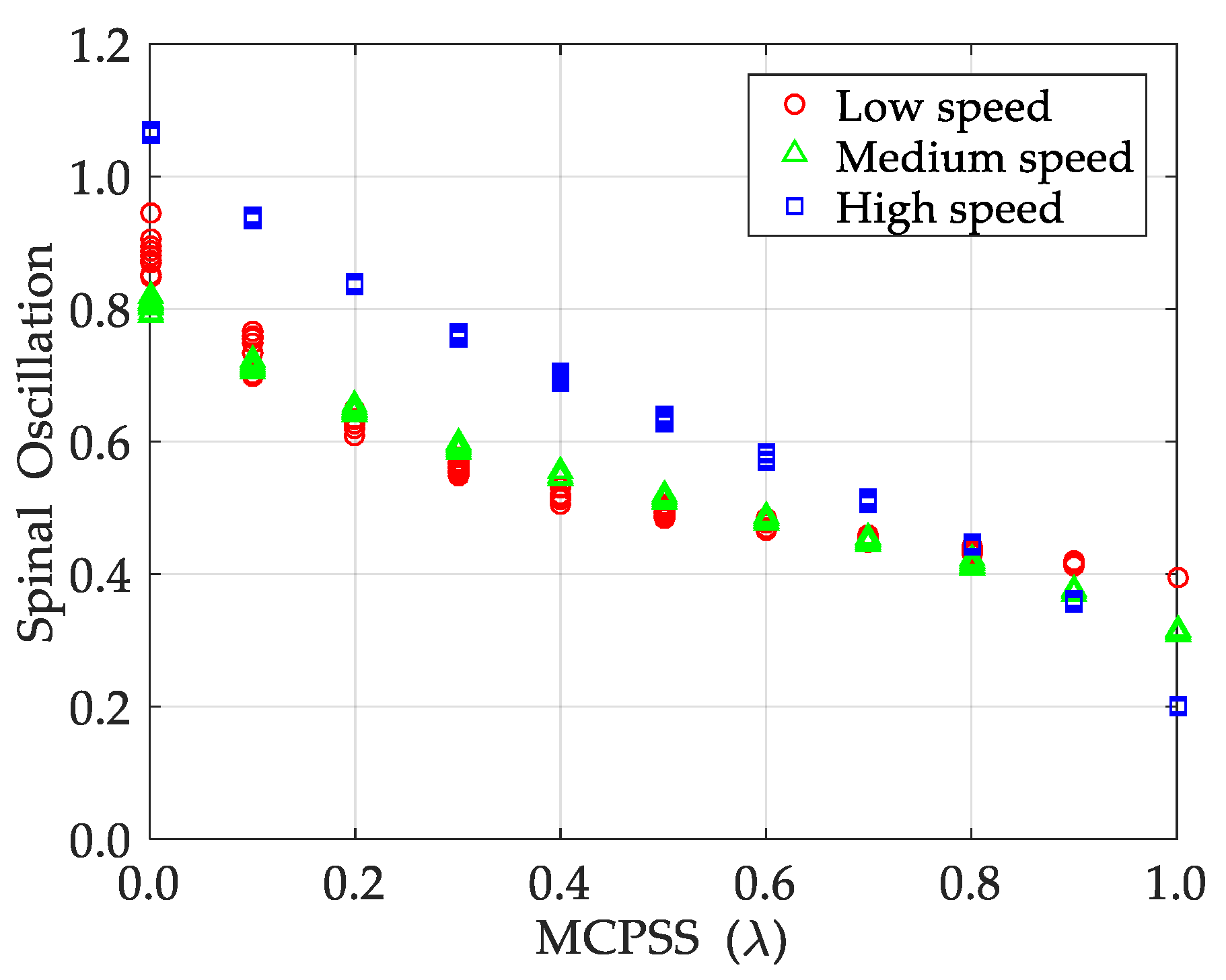
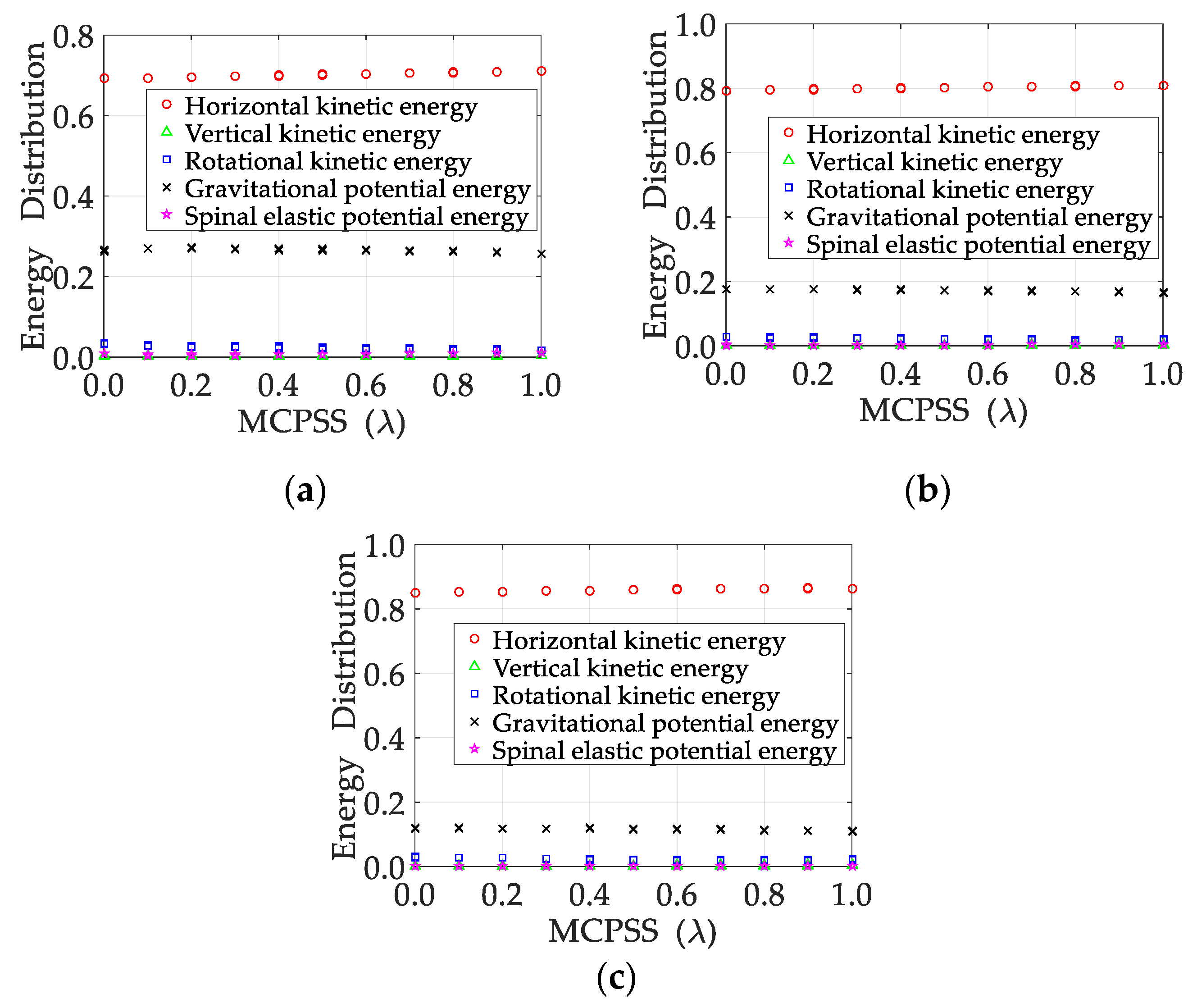


| Parameters | Values |
|---|---|
| 0.5 | |
| 0.5 | |
| 0.0878 | |
| 0.6522 |
| Parameter | Value | ||
|---|---|---|---|
| 1.8 | 2.4 | 3.0 | |
| 1.41 | 1.02 | 0.62 | |
| 22.09 | 31.97 | 33.43 | |
| 2.34 | 3.63 | 5.30 | |
© 2020 by the authors. Licensee MDPI, Basel, Switzerland. This article is an open access article distributed under the terms and conditions of the Creative Commons Attribution (CC BY) license (http://creativecommons.org/licenses/by/4.0/).
Share and Cite
Zeng, S.; Tan, Y.; Li, Z.; Wu, P.; Li, T.; Li, J.; Yin, H. Effect of Mass-Center Position of Spinal Segment on Dynamic Performances of Quadruped Bounding with a Flexible-Articulated Spine. Appl. Sci. 2020, 10, 1491. https://doi.org/10.3390/app10041491
Zeng S, Tan Y, Li Z, Wu P, Li T, Li J, Yin H. Effect of Mass-Center Position of Spinal Segment on Dynamic Performances of Quadruped Bounding with a Flexible-Articulated Spine. Applied Sciences. 2020; 10(4):1491. https://doi.org/10.3390/app10041491
Chicago/Turabian StyleZeng, Shun, Yuegang Tan, Zhang Li, Ping Wu, Tianliang Li, Junfeng Li, and Haibin Yin. 2020. "Effect of Mass-Center Position of Spinal Segment on Dynamic Performances of Quadruped Bounding with a Flexible-Articulated Spine" Applied Sciences 10, no. 4: 1491. https://doi.org/10.3390/app10041491
APA StyleZeng, S., Tan, Y., Li, Z., Wu, P., Li, T., Li, J., & Yin, H. (2020). Effect of Mass-Center Position of Spinal Segment on Dynamic Performances of Quadruped Bounding with a Flexible-Articulated Spine. Applied Sciences, 10(4), 1491. https://doi.org/10.3390/app10041491






